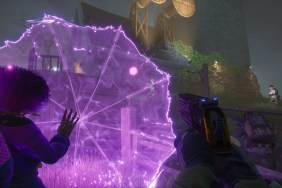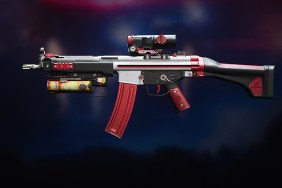The saga of Arkane Studios’ Prey up until its release last Friday was that of an unfolding mystery. A teaser here, gameplay snippets there, and a video of all the different things you can morph into as a cherry on top. Even last week’s free demo of Prey left more questions than answers. Why wasn’t there a PC demo? Would that nagging door glitch be a huge factor?
All of these pre-launch questions and concerns were put to bed over the weekend, with Prey launching in a solid technical state with more depth than many expected. Though Prey’s full release brings its own set of issues, only few of them amount to anything more than nitpicks. Arkane Studios has released yet another involved, imaginative project that I won’t soon be putting down.
Meddling With Space Aliens

By now, we all know the basic premise of Prey, if only because we’ve heard it so many times before. Humans make a space station and start messing around with space aliens, and, wouldn’t you know it, not everything goes according to plan.
But Prey is far less about the overarching plot as it is about the minutia. Who’s trying to smuggle goods off the ship? Should we save this prisoner or condemn him death? How do I get into this dang room? These are much more what occupy your moment-to-moment thoughts and actions.
I suppose that’s why it’s easier to swallow the moments before the closing credits. It may seem I’m getting ahead of myself, already referring to the ending, but believe me when I say this just simply isn’t what Prey has most to offer. The way the story resolves felt unsatisfying no matter how many different ways I tried, and, while it didn’t amount to what I thought it would, giving it points for unpredictability, it’s unclear what Prey’s story actually did amount to. Is it a setup for a sequel? A statement about going Too Far, Too Fast? Heck if I know.
Boarding Talos I

What I do know, though, is that I had an absolute blast playing Prey, and that’s largely because of the design of the Talos I space station. Acting almost as a giant sandbox, Talos I provides several massive areas in which you can explore, and exploring is all the more rewarding because of a deep crafting and upgrade system.
Each major area in Talos I is vast and intricate, with all sorts of sub-areas and rooms that need to be explored. You can find an alternate path around a blocked door, try to hack your way in, search for a code or, if all else fails, turn into a coffee cup and slip through a small slot.
What you find in these places is even more important. You can locate valuable items, such as medkits, suit repair kits, items that restore your psychic powers, extra weapons or ammo, but you can also find a lot of junk. With this junk, you travel to static locations in each level called Recyclers to turn it into useful material. You then take that material to what’s called a Fabricator, again available in each level, to craft different items.
But, you can only craft items for which you have the plans. I always give points for games that encourage exploration, and this is definitely one of them. Just by exploring, I found the plans for a very valuable item early on. This made me eager to explore more so I could find even more valuable items. Then, Prey becomes a game of choices: do I use the material I have to build medkits or upgrade materials and play defensively, or do I use them to build shotgun ammo and EMP charges to go full offensive?
Stuck To You Like GLOO, Baby

Which brings me to another great part of Prey: its weapons. Sure, there’s a shotgun and a 9mm pistol, but, beyond that, Arkane Studios has become very inventive with its arsenal. Most notably, you have the GLOO Canon, which will probably go down as Prey’s signature weapon. This will probably be your best friend in the early goings of Prey, as it shoots out pieces of hardening foam, sort of resembling Popcorn when all is said and done, that immobilizes enemies for a short period of time, allowing you to do increased damage or run away.
It can also be used to create climbable platforms, making it essential for exploration. It’s essentially Prey’s bread and butter, a weapon with as much offensive capabilities as it has utility. Is your destination high up? Climb up with the GLOO Cannon. Is there a fire blocking your way? Put it out with GLOO.
But beyond the GLOO Cannon, Prey has lots of imaginative weapons to write home about. The Recycler Charge, for instance breaks down nearby matter into materials, again creating a weapon that has both utility and bite. Then you have the Q-Beam that effectively lowers an enemy’s max health, and can be meaningfully upgraded to sustain a longer blast time and better power.
Dream Or Nightmare

Parlayed with weapons is a meaningful, resource-based upgrade system. Upgrading weapons requires Weapon Upgrade Kits found throughout Talos I, and upgrading yourself to get better or more dangerous skills requires Neuromods, either found throughout the environment or crafted with the Fabricator (at a steep cost).
And, while you can play the game with only one type of upgrade, Prey is best experienced with a mix of both Human and Alien upgrades. By scanning aliens, you can gain access to their abilities, which have both offensive and utilitarian purposes.
But, if you unlock too many alien abilities, you’ll start to be hunted by The Nightmare, a very large and very powerful alien. You can evade him or you can kill him, but neither of these is the last you’ll hear of the Nightmare. Eventually, he will spawn again, and he will come for you if you cross paths.
While I was first skeptical of this feature, seeing it as a punishment for using the game’s abilities, I came to see it more as a challenge. After all, if you’re becoming so powerful with all these Alien abilities, one little old Nightmare shouldn’t scare you, should it? … Should it?
Now Loading

I do have nitpicks with Prey: it’s recharging-battery-based flashlight is a useless nuisance, sometimes climbing on GLOO isn’t as responsive, and, as I went over above, I didn’t have the satisfying feeling from the story I was hoping for, but that’s all well-and-good when you take in the sights and hidden treasures of Talos I.
But the loading times between major areas of the space station become a huge problem in late game. On the PS4, my loading times were an average of 2-3 solid minutes, making that my time to refill on water, make a phone call or order a pizza. In the early game, this wasn’t a huge problem. The individual areas are so vast that you can easily spend 2-3 hours exploring every bit of them, so a 2-3 minute delay in between is a welcome reprieve.
However, in the later game, you’ll have already explored these areas, and a complicated station map only lets you travel to and from certain locations from any one area. So, if I’m in the Bridge and I have to get to the Reactor Room, I have to go from the Bridge, to the Arboretum, to the Talos I Lobby, to Life Support and then to the Reactor Room. Just there, I’ve added 12 minutes onto my gameplay and done nothing in the mean time, since I’ve already explored all of those areas.
I’ve heard these load times are better on PC, which means I’m in the awkward and unexpected position of telling you that an Arkane Studios game runs better for the Master Race (take that, Dishonored 2). As it stands, my playthough of Prey took around 24 hours, and I imagine a good portion of that was staring at a loading screen.
I’m sure those with preconceived notions about the game’s quality will jump on this aspect. “Ah ha! I told you all!” they’ll say. But this sort of “gotcha” attitude falls tragically short of encompassing the game as a whole. It’s the kind of thing that represents a crack in the surface, rather than a fault in the foundation that sends it sinking into the sea.
Conclusion
What Prey lacks in originality it makes up for with meaningful follow-through. It’s drawn so many comparisons to System Shock, Bioshock, Alien: Isolation, and the list goes on and on and on.
But, rather than simply aping the superficial elements of its influences, Prey gets down to the core of what made them great and adds its own imaginative flare for good measure. While I may not remember its convoluted and potentially meaningless story, and can’t forget soon enough its incredibly long load times on the PS4, I will always remember Prey’s intricate level design, layered combat and the joy I got from exploring Talos I. Hopefully the day comes when I can say the same about Talos II.
-
Exploration is well-rewarded
-
Unique weapon designs create diverse gameplay
-
Intricate, multi-pathed levels
-
Deep and challenging upgrade system
-
Plot doesn't pay off well
-
Long load times in-between levels











